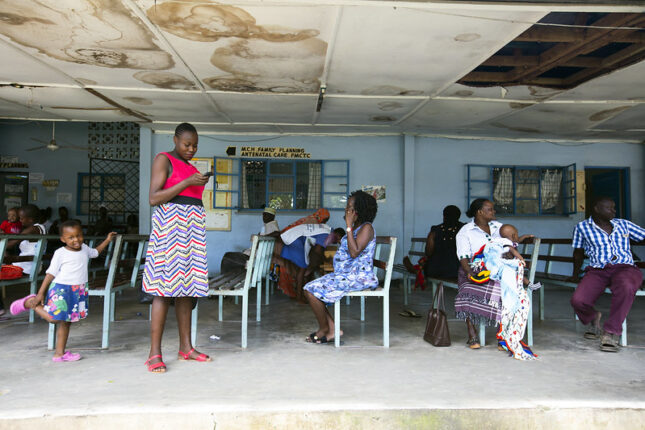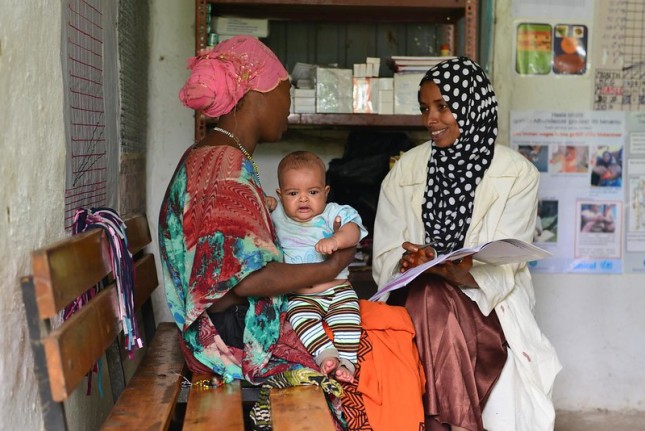-
Can Global Maternal Health Investments Help Eradicate Malaria?
›
The last two decades saw significant gains in reducing the incidence of malaria, but can we be doing even more to eradicate this disease? In early January 2024, a New York Times op-ed argued that millions were dying needlessly as tools to defeat malaria were within reach.
-
Is Health Financing Gender Biased?
›
We take for granted the way health programs are financed—and often forget that there are biases in financing functions that undermine equitable access to health care.
For instance, through gender advances, women now decide on contraceptive use and childbearing. Yet the health financing related to those services tends to emphasize improving efficiency and optimizing resources, without necessarily aligning its objectives with gender equity or inclusivity.
-
AI in Community Care: Can Co-design Shift the Balance in Maternal Mortality?
›
We face a global crisis of maternal mortality that extends to untenable disparities within the United States. Yet too often, the populations most affected by such health disparities are sidelined in the creation of solutions to address them.
-
Lessons from the COVID-19 Pandemic Can Help Achieve Health for All
›
“The [COVID-19] pandemic, as all of you know, severely disrupted essential health services in countries around the world, and it left many health systems reeling from the drain on resources,” said Nidhi Bouri, Assistant Administrator for Global Health at the United States Agency for International Development (USAID) at a recent Wilson Center event to assess lessons learned in coping with the stressors created by the global health crisis.
-
Crisis to Innovation: Lessons from COVID-19 Can Transform Routine Immunization Strategies
›
At a recent Wilson Center event, hosted in partnership with USAID’s MOMENTUM Routine Immunization Transformation and Equity Project, Dr. Folake Olayinka, Immunization Technical Lead of the Global Health Bureau at USAID, described a recent two year period as “the largest sustained backsliding of childhood vaccination,” citing the fact that “between 2019 and 2021, approximately 67 million children missed out on essential lifesaving vaccines.”
-
New Global Health & Gender Policy Brief: Women and Girls in Wartime
›
Throughout history, women have played crucial leadership roles during wartime, even if their contributions were not always well-documented or recognized. In times of conflict, societal norms sometimes shift, allowing women to step into positions of authority that might have been traditionally reserved for men. Despite indisputable evidence of women’s leadership and bravery during conflict, however, women continue to be construed as “victims” and “passive actors”—rather than the political agents, leaders, soldiers, and visionaries that they are.
-
2023 DOT- MOM Guest Contributor Highlights
›
The Dot-Mom column of the Environmental Change and Security Program’s New Security Beat blog serves as a platform to shed light on diverse perspectives and insights from experts in maternal and reproductive health, gender equity, and peace and security. In 2023, the Dot-Mom column was marked by an incredible number of guest contributor articles.
-
The Health Burden of the Afghan Woman: Navigating Challenges Amidst Calamity
›Dot-Mom // Guest Contributor // November 21, 2023 // By Massoma Jafari, Fatima Jafari, Faiza Rab & Ijia Ormel
In the rugged heart of Western Afghanistan, the people of Herat Province have been grappling since October 7, 2023 with a relentless barrage of aftershocks from a series of powerful earthquakes that surpassed 6.0 in magnitude. These seismic convulsions have left an indelible mark on this land and its people. After 40 years of almost-continuous conflict, Afghanistan already faces some of the world’s most alarming health statistics. The nation has one of the highest maternal mortality rates globally, with 638 deaths per 100,000 live births, as well as an infant mortality rate of 36 deaths per 1,000 live births.
Showing posts from category Dot-Mom.











